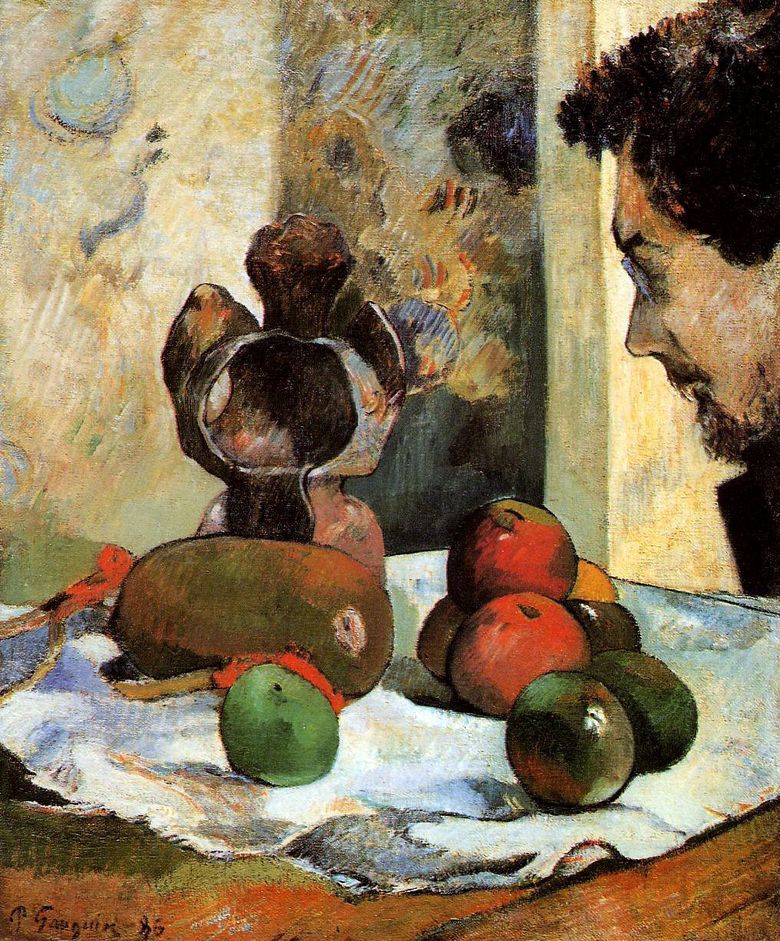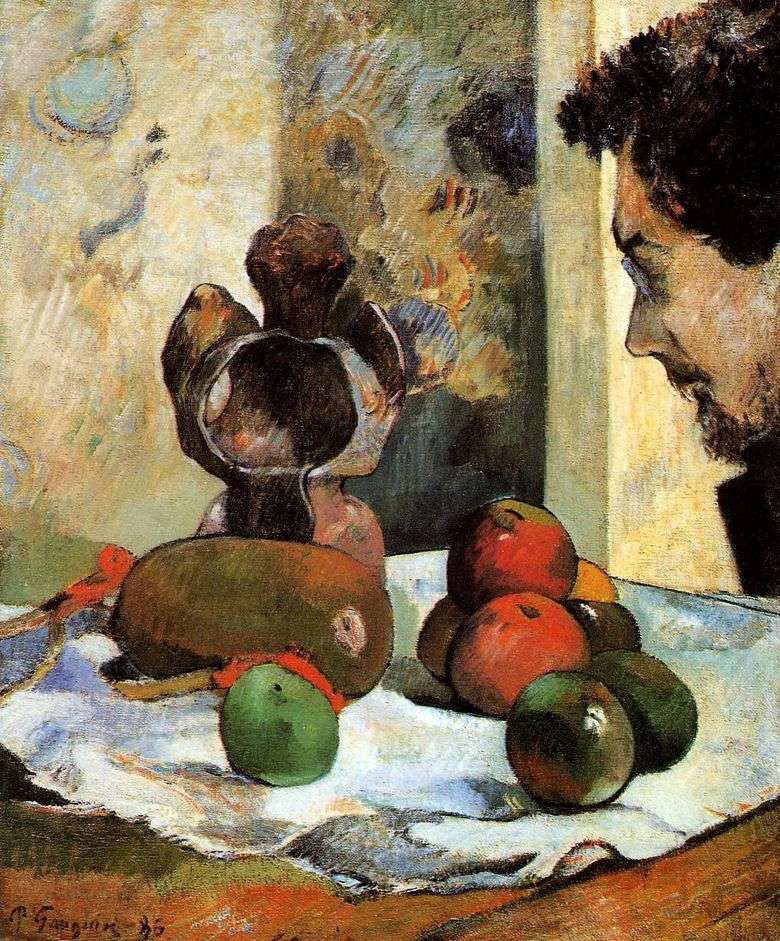
“Still life with the profile of Laval” – canvas, oil. The painting was written in 1886 by the French artist Paul Gauguin. To date, the canvas is exhibited at the Indianapolis Museum. The painting depicts a friend of Gauguin – Charles Laval in profile, surrounded by inanimate objects. Among other items, there is a ceramic pot on the table that Paul Gauguin executed with his own hands.
The combination of portrait and still life in this case shows how skillfully Gauguin was able to pick up all the best from the masters that he admired. For example, a fragment of Laval’s face in the picture is made in the manner of Edgar Degas. The technique of still life, in which fruits are written in parallel strokes, can be compared with the work of Paul Cézanne. In addition to the performance of his favorite artistic devices, Gauguin brought in this work one more detail from himself. She became a ceramic vase, a strange, bizarre and even somewhat frightening form, which Laval carefully examines in the picture.
Gauguin deliberately used the technique of the two most famous at that time representatives of the genres of modern and still life. At the same time, the artist did not seek to harmoniously embody these two techniques on the canvas. On the contrary, Gauguin leaves them in some disagreement, introducing the impression of the incoherence of the composition. This is his first picture of a series of canvases that challenge creativity. Laval, in the role of spectator, tries to foresee the next step of Gauguin.
Gauguin and Laval met in the summer of 1886, and the young artist soon became a student of Gauguin. This “minor” role can be caught on the attentive and studying view of Laval on the vase, performed by his teacher, Gauguin.
Thanks to what we know about this vase, one can attribute the creation of this painting to the end of 1886, after Gauguin’s return to Paris, since the vase was created no earlier than October. Gauguin highly valued his work on ceramics, as all works of art provide an opportunity for earning. He wrote to his wife Matt that this unusual pot should cost at least 100 francs. To date, the location of this vase is unknown, it may have been destroyed.
Vincent van Gogh suggested sharing portraits among a small group of artists. This happened on Port Avenue, the goal was to strengthen the sense of community among artists. These “friendly portraits” were performed in unusual new techniques, and the masters expressed their rejection of naturalism and commitment to symbolism.
“Still life with the profile of Laval” was sold in 1998 as part of the collection of Gauguin and his entourage from Pont-Avenue. The Swiss collector Samuel Josefovich purchased 17 paintings and 84 prints, paying about $ 30 million. The organization Lily Endowment earned $ 20 million on this transaction, the rest of the amount was received by the Indianapolis Museum. Whatever Josefovich paid to the Indianapolis Museum personally from himself is unknown. It is curious that the collector donated all the engravings he acquired. He acquired the Pont-Avenue collection in 1950-1960, before Gauguin’s work became highly appreciated. This unusual picture is currently exhibited in the Jane H. Fortune Gallery, under the serial number 1998.167.
 Nature morte au profil de Charles Laval – Paul Gauguin
Nature morte au profil de Charles Laval – Paul Gauguin Naturaleza muerta con perfil de Charles Laval – Paul Gauguin
Naturaleza muerta con perfil de Charles Laval – Paul Gauguin Still Life with Fruit by Paul Gauguin
Still Life with Fruit by Paul Gauguin Still Life with Sunflowers on the Chair by Paul Gauguin
Still Life with Sunflowers on the Chair by Paul Gauguin Self-Portrait with the Yellow Christ by Paul Gauguin
Self-Portrait with the Yellow Christ by Paul Gauguin Interior of the artist’s house at the rue Karlsel by Paul Gauguin
Interior of the artist’s house at the rue Karlsel by Paul Gauguin Still Life by Paul Gauguin
Still Life by Paul Gauguin Still Life with Three Puppies by Paul Gauguin
Still Life with Three Puppies by Paul Gauguin